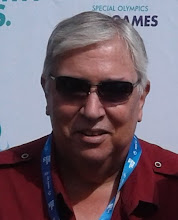Bizet Gets Buzzed: The Way It Was, 13 January
Bizet gets buzzed, when then-Shakespearean actor Maurice Evans aids and abets Fred (Allen) in assassinating Carmen.
Unfortunately, that buzzing will have to wait for a small passel of postcards, tied to Mr. A's judging an "I Can't Stand Jack Benny Because . . . " contest; and, the Alley demimonde answering how women will fit into the post-World War II business world. (Here's a hint: You will learn the one thing no American woman can possibly become, ever, courtesy of the rip-roaring Senator Claghorn himself.)
With Portland Hoffa. Claghorn: Kenny Delmar. Titus: Parker Fennelly. Mrs. Nussbaum: Minerva Pious. Ajax: Peter Donald. Announcer: Kenny Delmar. Music: Al Goodman Orchestra, the Five DeMarco Sisters. Writers: Fred Allen, Bob Weiskopf.
AIRWAVES
1905: "GUARANTEED TO WORK UP TO ONE MILE"---So says the advertising text when a small ad for the Telimco---possibly the first known radio device for sale to the general public, at a price of $7.50 ($163 in 2000 dollars)---appears in Scientific American.
Named acronymously (the trademark stands for The Electro Importing Company, based in New York), the inexpensive price of the device also prompts a New York police department investigation into whether the ads might be a scam, according to author/inventor Hugo Gernsback---for whom the Hugo Award for achievement in science fiction will be named.
1910: COME IN, CARUSO, YOUR TIME IS NOW---Tenor legend Enrico Caruso’s performance is carried from the Metropolitan Opera House to a ship at sea by a Lee DeForest radio---the possible first known operatic performance to be carried on old-time radio of any kind.
Four years earlier, DeForest’s Audion vacuum tube---with three electrodes including a plate, cathode, and control grid---improved the earlier John Fleming diode vacuum tube detector, helping make longer-distance radio transmission possible.
DeForest would also go on to broadcast perhaps the first known radio advertisements, spots for his own products, six years after his radio brought Caruso to sea.
1922: SAY WHA?---Madison, Wisconsin station 9XM receives the Federal Communications Commission's sanction to use the call letters WHA.
Now part of National Public Radio, headquartered at the University of Wisconsin-Madison, the flagship for talk-based Ideas Network, WHA as 9XM hit the air somewhat in 1914 . . . and, it may have been the only U.S. radio station allowed to broadcast continuously during the U.S. involvement in World War I, a time during which the federal government was believed to have closed all other existing domestic civilian radio operations.
CHANNEL SURFING . . .
THE ABBOTT & COSTELLO SHOW A VISIT TO THE SANITARIUM (NBC, 1944)---That's where Lou (Costello) and his head cold go, after Bud (Abbott) lures the poor schlub (as usual) into yet another classic homonymous routine ("Fleeing Flu"). Guest: Peter Lorre. Music: Freddie Rich Orchestra, Connie Haines. Announcer: Ken Niles. Writers: Possibly Pat Costello, Parke Levy.
THE DANNY KAYE SHOW: THE STORY OF HIS LIFE (CBS, 1945)---Unfortunately, he can't do it, until a) Eve (Arden) practically bludgeons him into reading his first show’s fan mail; b) Lionel (Stander) brings him a whole bushel basketful of letters; and, c) he deals with one fan wanting autographed pictures of . . . Harry James (who provided his music, including a charming take of Duke Ellington's "I'm Beginning to See the Light," with future vocal star Kitty Kallen) and Ken Niles (his announcer), compared to which taking up his life story is . . . not quite so traumatic. Writers: Goodman Ace, Sylvia Fine, Hal Kanter, Abe Burrows.
THE HALLS OF IVY: THE STUDENT NEWSPAPER EDITORIAL (NBC, 1950)---Its criticism of the Ivy board of governors moves chairman Wellman (Herbert Butterfield) to demand Hall (Ronald Colman) expel its author post haste, but investigating it brings Hall quite a surprise. Victoria: Benita Hume Colman. Buckley: Roland Morris. Wellman: Herbert Butterfield. Merriweather: Willard Waterman. Announcer: Ken Carpenter. Writer: Walter Brownmule.
THE COUPLE NEXT DOOR: CAKE RECIPE (CBS, 1958)---It's the one the lady of the house (Peg Lynch) asked from a new French restaurant, but its arrival almost turns her upside down---because the chef sent her a bill for the recipe, at which point the formerly amused gentleman of the house (Alan Bunce) becomes just as outraged. Writer: Peg Lynch.
PREMIERING TODAY . . .
1884---Sophie Tucker (as Sonia Kalish; singer/comedienne: Sophie Tucker and His Show), Russia.
1903---Kay Francis (as Katharine Edwina Gibbs; actress: Lux Radio Theater), Oklahoma City.
1910---Jack Mercer (actor: Popeye the Sailor), unknown.
1913---Lloyd Bridges (actor: Suspense; Arch Oboler's Plays), San Leandro, California; Jeff Morrow (actor: Electric Theater), New York City.
1918---Steve Dunne (actor: The Adventures of Sam Spade), Northampton, Massachussetts.
1919---Robert Stack (actor: Family Theater; Lux Radio Theater; Screen Guild Theater), Los Angeles.
1930---Frances Sternhagen (actress: The CBS Radio Mystery Theater), Washington.
1903---Kay Francis (as Katharine Edwina Gibbs; actress: Lux Radio Theater), Oklahoma City.
1910---Jack Mercer (actor: Popeye the Sailor), unknown.
1913---Lloyd Bridges (actor: Suspense; Arch Oboler's Plays), San Leandro, California; Jeff Morrow (actor: Electric Theater), New York City.
1918---Steve Dunne (actor: The Adventures of Sam Spade), Northampton, Massachussetts.
1919---Robert Stack (actor: Family Theater; Lux Radio Theater; Screen Guild Theater), Los Angeles.
1930---Frances Sternhagen (actress: The CBS Radio Mystery Theater), Washington.












0 Comments:
Post a Comment
Subscribe to Post Comments [Atom]
<< Home